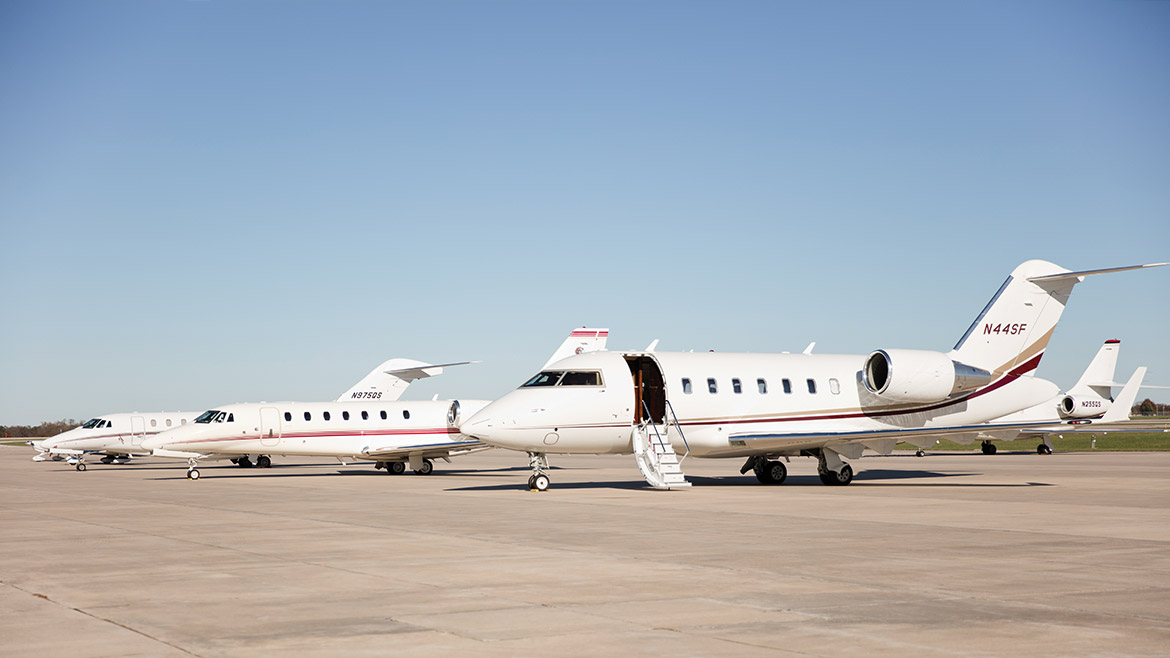
The earliest a new terminal will open at Columbia Regional Airport is 2020. Four years or so, assuming everything goes according to plan. That’s after $10 million in lodging tax revenue trickles in, after the airport makes its promised (and paid for) runway improvements, after the City’s economic development department coaxes the state and the Federal Aviation Administration for matching funds. After more planning, approval, construction. After more waiting in, and with, the current terminal.
This can be a jarring timeline to consider given the momentum that COU has quickly built up over the second half of 2016. In early August, the city passed a one percent increase in the lodging tax by a tidy margin — two to one — to help fund the new terminal. Shortly after, they hired a new airport manager who came with high praise from her predecessor, longtime airport employee Don Elliot. The City met with the FAA about future project funding. They moved the airport from the domain of public works to the Department of Economic Development, signaling their bigger plans for the facility. They dissolved the airport advisory board, restructuring the group to include more economic development stakeholders. Stacey Button, the city’s director of economic development, gave a report to members of the Columbia Chamber of Commerce touting record passenger numbers in November. It all moved fast.
But 2020 (or later) isn’t particularly jarring when you consider how far the airport has had to come in the last decade, and how far it still needs to go. “The airport almost was shut down in 2008,” City Manager Mike Matthes says. “In fact, there were two or three months where it was dark. There were no flights, or no commercial flights.” The city staved off closure by cutting a deal with Northwest Airlines for a nonstop flight to Memphis; after Northwest was absorbed by Delta, they added nonstop service to Atlanta, the world’s busiest airport.
It was a strange time — the middle of a recession — to be growing in air service. The airline industry had already been in decline, but the economic downturn proved especially challenging. After the City heard Delta was cutting its relationships with smaller airports, they began shopping COU around to other carriers, eventually reaching an agreement with American Airlines for service to Chicago and Dallas–Fort Worth. For a few weeks, it looked like COU would have access to four hubs; it would have been a remarkably fast ascension for the airport, which, again, nearly closed four years earlier.
But Delta took offense to the City’s offer of a $3 million revenue guarantee to American, which it found out about through media reports. Matthes says communication between the city and Delta was never good, and that Delta was on its way out anyway, but adding a competing airline hastened their exit.
Delta’s departure was a setback, but the City responded strongly. They brought in more passengers, filled up bigger planes, organized improvement projects, hired a planning consultant, and did everything they could to flood the airport with enough demand to prove that it was ready to grow.
That brings us to today. A $38 million terminal to build, and all eyes on COU.
Making Space
The current terminal was built in the mid-’60s, and it looks the part: quaint, dark-bricked, boxy. The main terminal area is dominated by security screening equipment, which pushes nearly to the main entrance, with skinny corridors on either side (one holds the line for rental cars; the other has a modest snack bar, a recent addition). The passenger holding area is a trailer the airport bought from Columbia Public Schools, who used it as an overflow classroom. The hallway that leads past ticketing to baggage claim has a short ceiling mostly covered by fluorescent lights. The walls are decorated with welcome posters that seem — whether due to the posters themselves or the setting they’re in — dated.
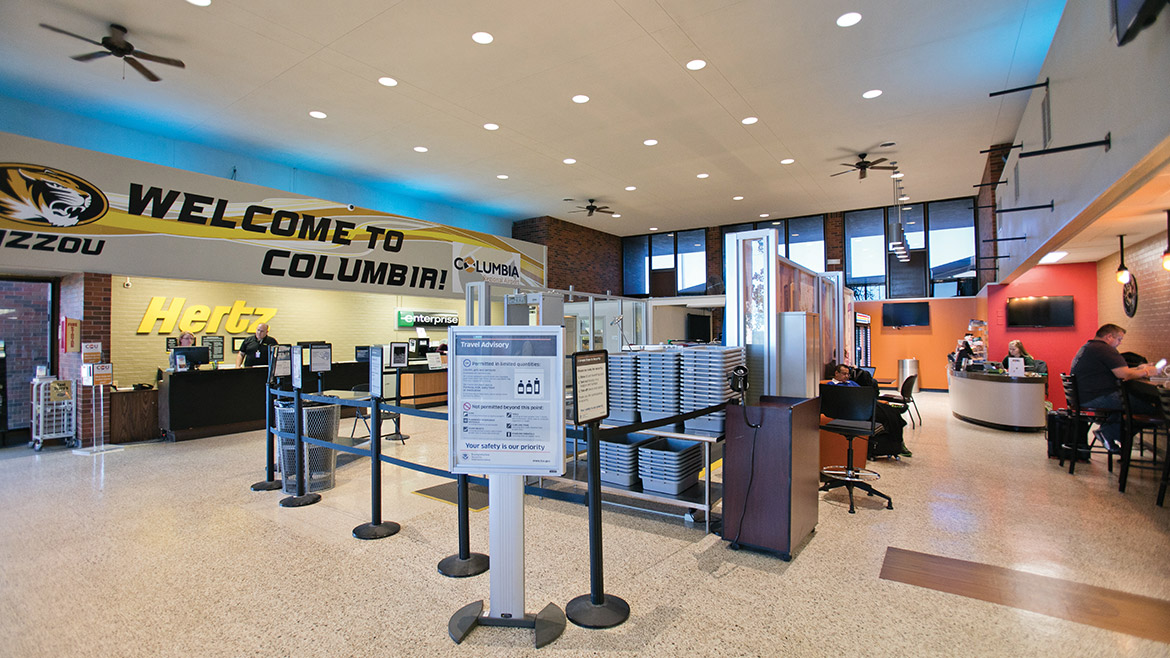
The airport stands mostly by itself on land outside of Ashland, the result of a compromise between Columbia and Jefferson City, who, in the early ’60s, were comparably sized and both wanted to be the site of mid-Missouri’s airport. For a long time, the airport worked great. A smallish airport for smallish towns, with a good-enough terminal and runways to support the general aviation traffic and small passenger planes that used it.
But in the early 2000s, the airport, like many other vestiges of Columbia’s small town heritage, chafed against the city’s rapid growth. The airport seemed fitting for a town for 60,000. It seemed out-of-place in a city of 100,000.
Matt Jenne, co-owner of Addison’s and Sophia’s restaurants, has been fascinated with Columbia’s airport since childhood. Before going into the restaurant business, he graduated from MU with a degree in civil engineering, and he nearly decided to become an airline pilot. As he opened his businesses and the city grew, COU made less and less sense to him.
“I think my opinion was pretty much like everyone else’s: it wasn’t going the way we wanted it to go,” Jenne says. “I specifically felt, because of the changing landscape of the airline industry, going to St. Louis and Kansas City for a short flight on a puddle jumper didn’t suit our needs, and that’s what we were doing at the time. . . . we still had some holdovers where we were flying these prop planes from Columbia to St. Louis, and I can tell you it didn’t make any sense as a consumer.”
Jenne, who was a longtime member of the airport advisory board before its dissolution this fall, had a close view of the supply–demand discord that led to the airport nearly closing in 2008. Because the region had changed so much and so quickly, COU faced a catch-22: the airport would need to be improved before people could use it effectively, but people needed to use it before the city could justify making improvements.
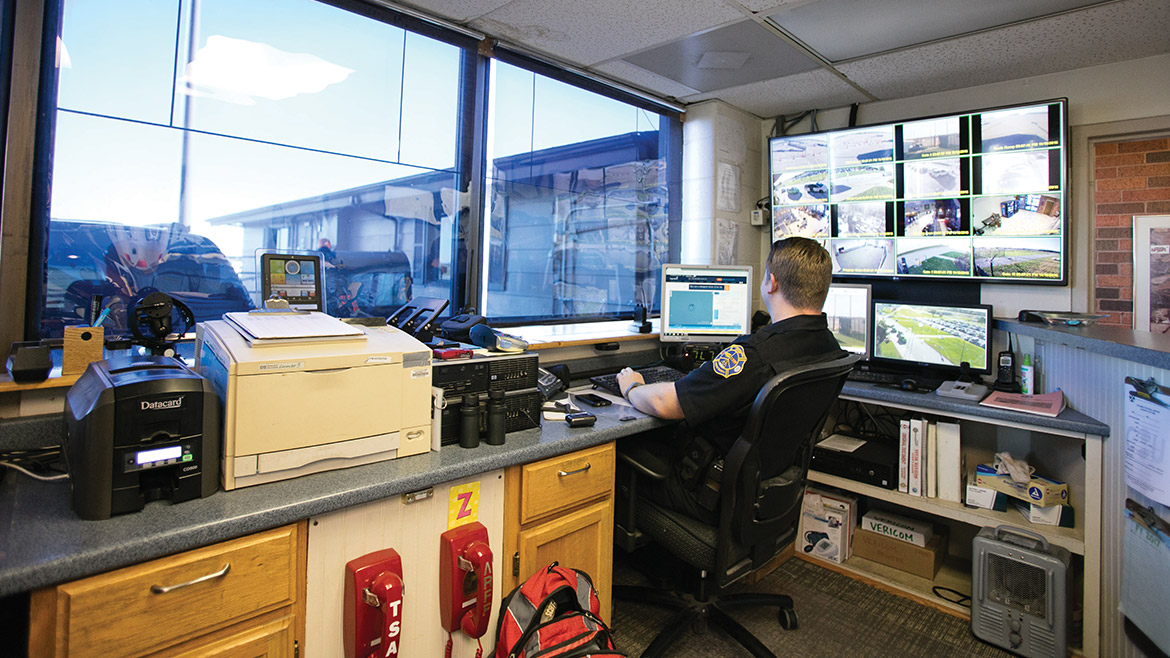
“I felt like we needed to figure out a way to get nonstop service to a major hub,” Jenne says. “That was my goal with joining the airport board, and, believe me, it was shared by everyone on the board.”
The city, led by John Glascock, director of public works, set about recruiting legitimate commercial air service to COU, and they found it in Northwest, later to become Delta — all while keeping the long term goal in mind. “Yes, the terminal is old and undersized,” Matthes says, “but we shouldn’t build a new terminal if the service isn’t there. And now we’re, what, six times the volume? And we can’t take in anymore volume. We literally have people parking in the grass. So we have to build a new terminal.”
In 2015, City management and the city council began making plans for COU’s next phase. Led by former mayor and ardent airport ambassador Bob McDavid, the City generated support for a new terminal. They just had to find the best way to get the money. The City issued a public survey to gauge their chances of success on a preferred option, one that had been discussed in 2012: raising the city’s lodging tax by one percent and dedicating the revenue to airport improvement.
The survey results looked good for the City — 67 percent of respondents said they’d vote for the tax.
No Plan, No Tax
“I know a lot of people who you’ll hear say, ‘Perception is reality when you get into politics,’” Matthes says. “So you can say the sky is purple polka dots, but, in this city government, no it isn’t. There’s a knowable fact about that, and we make decisions based on facts.”
Columbia’s city government is nominally apolitical: even elected council members can’t run on a political party. Still, the airport lodging tax vote became a marquee political event this summer, thanks to vociferous opposition from the Columbia Hospitality Association, a group representing the city’s hoteliers.
Glyn Laverick, CHA president and owner of The Tiger Hotel, criticized the City for not being sufficiently transparent about the business plan for the new terminal.
“I probably spend two to two-and-a-half months a year on the road, traveling to hotels and different airports,” Laverick says. “As a passenger, Columbia Regional is not much different than a lot of small community airports. The real difference in Columbia is the price of tickets and then the destinations offered, and that’s the problem as a passenger. I’ve always found it easy to go through security — and sure, it’s not a great building. And part of that is: do you need to replace the whole terminal? Probably not. Do you need a better holding area than a double-wide that used to be a classroom? Probably you do. But is the cost of that $40 million or $3 million?”
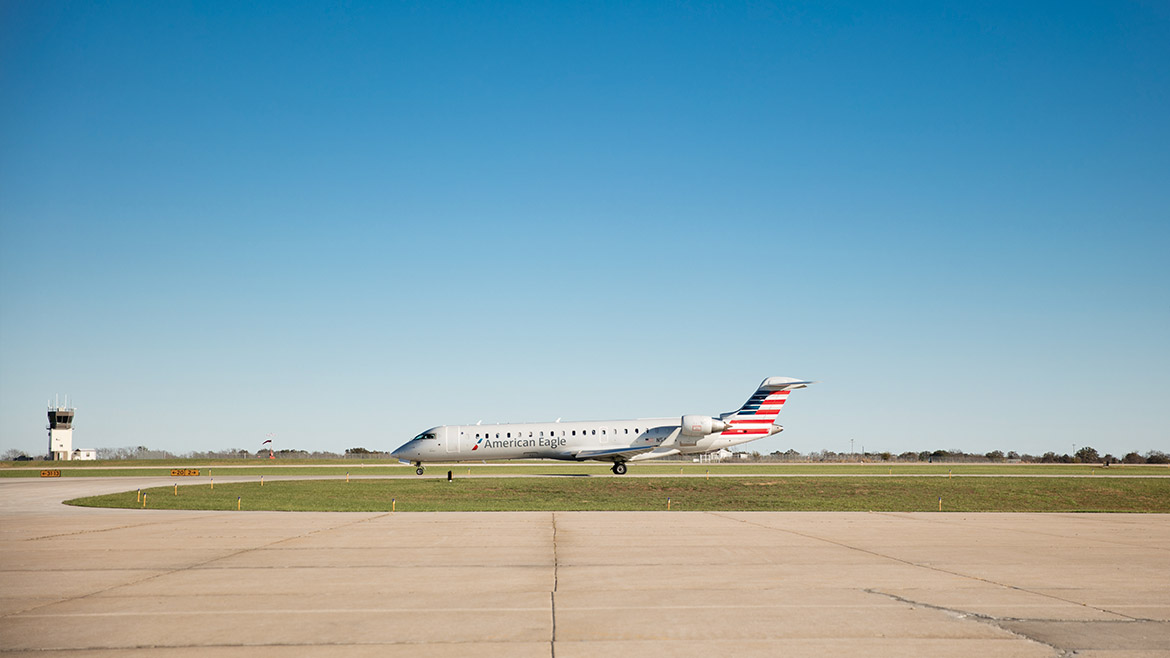
The CHA campaigned heavily against the tax. They made up lawn signs reading, “No Plan, No Tax,” and they created a TV ad and a website, noplannotax.com, to voice their concerns. The Missouri Hotel and Lodging Association also sent a stern letter to City staff and elected officials asserting that Columbia “has likely misused funds that were required to be used narrowly for tourism promotion, but instead, have been diverted to an airport infrastructure project.” The CHA questioned why the city would collect $10 million from the hotel tax without ensuring they could cover the rest of the cost of the terminal. FAA funding was a particular concern, since the City will be relying on an FAA grant to cover about half the cost of the project.
Airport representatives repeatedly said the FAA would only help with funding if Columbia could show it was serious about getting revenue for the project — and passing the tax would do that. Matthes and Button both cite the airport’s work with the FAA on the current runway improvement projects as a sign of good faith between the two organizations.
“You heard the rhetoric — no plan, no tax. Well we had enough plans to choke a pig,” Matthes says. “The master plan was three inches thick. So our response is always, ‘What plan do you want? You want the floor plan, there it is. You want the artist renderings, there they are. You want the master plan, there that is. And we’re always in a planning process — we’re in this planning process with the FAA to fund the terminal — but we’ve been talking about this for decades.”
The City released a point-by-point response to the CHA’s questions, and, just before the election, the City-backed PAC supporting the tax, the Foundation for Columbia’s Future, filed an ethics complaint about the CHA’s expenditures. Voters didn’t appear to be affected by the back-and-forth — the tax passed with almost the exact margin that the City’s survey predicted it would. There are also conflicting reports about how many of the town’s hoteliers were really in opposition. Dave Parmley, owner of The Broadway hotel, which hosted an election party for tax supporters, was quoted in the Columbia Daily Tribune saying that opposition came from a small group. Laverick says all but one hotel owner — Parmley, presumably — was either against the tax or neutral about it.
Laverick also says the CHA couldn’t get a meeting with the City until just before the election, and he says members of the CHA felt uncomfortable about their place in the town’s business community, which largely supported the tax. Matthes says the City will be inclusive with hoteliers as the terminal develops, saying, “We’re going to work pretty closely with them as we progress and keep them in the loop so they feel like they know what’s going on.”
Laverick has yet to feel invited: “I don’t think [the relationship] has changed dramatically. Gary Ward [MU’s vice chancellor of operations and member of the Foundation for Columbia’s Future] was gracious enough to set up a couple meetings with the city manager, and there was a lot of productive conversation, but there was no follow up. And that’s disheartening, but I don’t think it was unexpected.”
The CHA levied perhaps the heaviest criticism of the City’s lack of transparency about the airport, but not the only one. Some criticized how the city handled its relationship with Delta, although no critic was louder than Delta. The City was also cagey when, in November, the recently hired airport manager, Tamara Pitts, unexpectedly resigned. (The City said they didn’t release details at Pitts’ request.) The City also rankled some by dissolving the existing advisory board in favor of a new one. Ashland mayor Gene Rhorer, who had a seat on the old board, says: “It wasn’t a really neighborly thing to do. Doesn’t instill future good feelings.”
All these minor controversies could be chalked up to how the airport’s role in the community has changed in the last decade — how it has gone to being a competent, if limited, public works project to a key piece of the City’s economic development plan, a more outward-facing role. And while the city may be apolitical, a little political tact in that transition wouldn’t hurt.
Moving People
The City’s hiring of Button, who oversaw Flagstaff, Arizona’s airport in her previous job leading that city’s economic vitality department, has invigorated the airport’s pivot to economic development. As Matthes says: “We’ve got Stacey Button in economic development now. She knows more about airports than I ever will, so why waste the opportunity when you have that talent?”
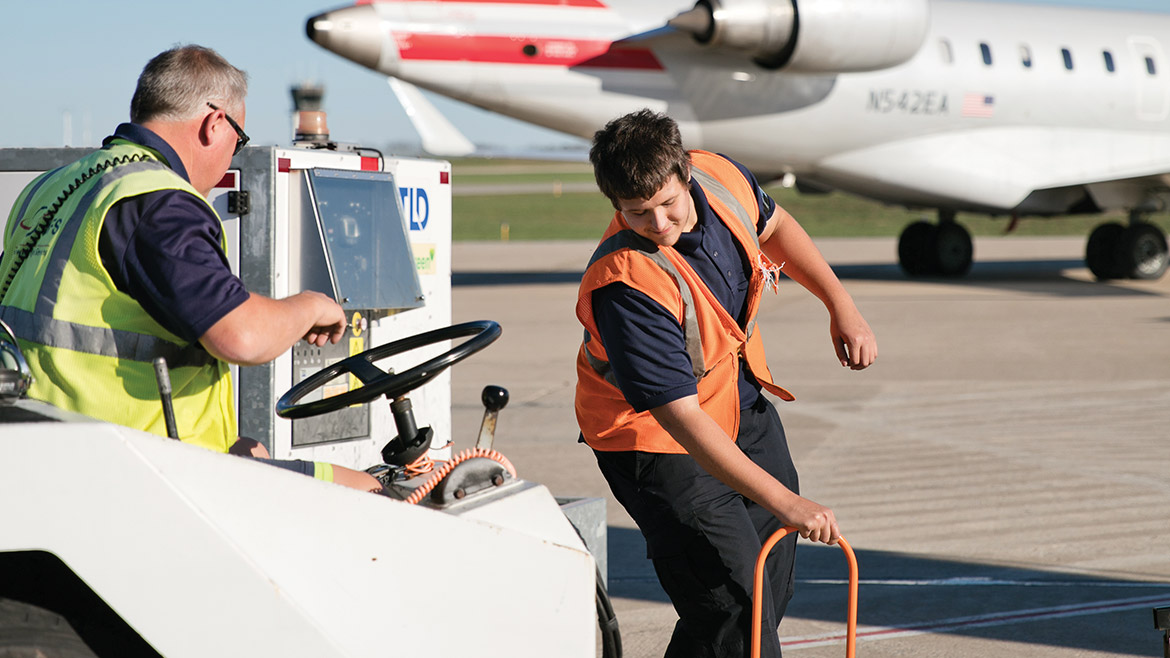
Button says she didn’t take her job because of the airport — it was still a public works operation when she was hired — but she’s certainly embraced it. “It’s exciting!” she says. “And that’s probably cliché, to say that talking about airports is exciting, but I love talking about airports. I bleed jet fuel.”
Economic studies have shown a positive correlation between airport activity and economic growth, though the cause-and-effect relationship isn’t entirely clear. Business recruitment probably plays a role, since companies like to invest in places they can access easily. In Columbia specifically, the airport has been linked to the medical isotopes produced at the MU Research Reactor. Having a nearby airport with more service options would give MURR a wider reach for the isotopes, which have short half-lives. The airport has also been an important factor in the city’s nascent medical tourism exploration — people would be more likely to come to Columbia for health care if they could fly right in, the logic goes. Expansion would likely reap benefits in smaller mid-Missouri communities, like Ashland, which has been annexing land near the airport, anticipating future travel-related development. “I don’t see it as anything but positive,” Rhorer, the Ashland mayor, says about the airport.
“When visitors come to a community, air transportation is one of the modes to get there,” Button says. “And visitors get there, they fall in love with it, they become residents. And as they become residents, they bring their businesses there, and those businesses bring visitors to the community. It’s this full circle.”
Matthes says the move to economic development — and the shuffling of the advisory board to include more economic development stakeholders — is about shifted perspectives. “We didn’t build an airport for the purpose of running an airport,” he says. “There’s a reason you build an airport, and it’s economic development. It’s an investment in the business activity in the community.”
Button praises the job that public works has done in bringing the airport back from the dead and for starting the capital improvements projects that will lead up to the new terminal. The City’s focus is now on two tracks: securing the rest of the funding for the terminal and expanding air service. Button feels confident in both, given the sustained support the airport has enjoyed both from the people who use it and from the people who hope to use it someday. “I think they’ve found value in flying out of COU and the convenience and the ease, and that really sets the stage for opportunities to grow the airport and [justify] how they value it in the future,” she says.
When the new terminal is built, it will have four gates. It will have jetways. It won’t have trailers. It will be a pleasant, modern shape: a gently arched roof swooping up and then down over a wall of glass on the front of the building. It will stand a little bit taller among the hills and open fields and trees on the land around Ashland. It will have longer runways for bigger planes, hopefully going more places. The interior will be airy, but sparse — dignified. One of the artist’s renderings includes a small tree near the front glass. There will be plenty of room for waiting passengers. It will be accommodating for people with disabilities. “It is going to be, I would say, a very Missouri terminal,” Matthes says. “Utilitarian. We’re going to put a little bit into aesthetics, but it won’t be much. The key is to make it useful.”

Button says the greatest challenge for the City moving forward is managing expectations: reminding people that expanding the airport is a long process, and a complex one. But eventually, the airport will catch up to the city that built it, and people will be waiting.
“This community has rallied behind that airport,” Button says, “and they support it by flying, they supported it through the passage of Prop 1, and they support it through engagement. A day doesn’t go by — an hour doesn’t go by — where there’s not a question about the airport.”


